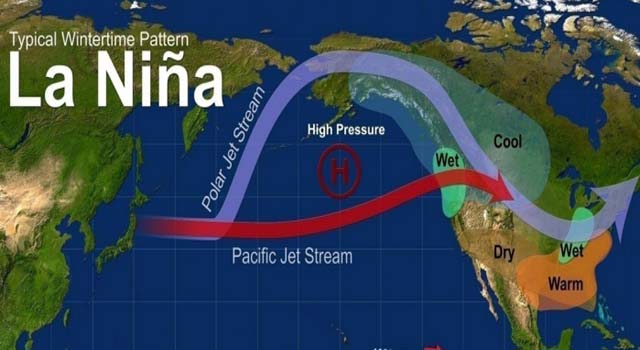
PARIS, March 7 (NNN-AGENCIES) — The rapid return of the La Nina weather phenomenon “may actually decrease” the risk that 2024 smashes last year’s record heat, Europe’s climate monitor said, amid enduring historic global temperatures.
Although the past nine consecutive months have clocked temperatures previously unseen by humanity, it fell in line with climatologists’ predictions of human-caused climate change which “could have taken more into account”, said Carlo Buontempo of the Copernicus Climate Change Service (C3S).
Contributors to the successive record temperatures range from natural cyclical events like the warming El Nino weather pattern and solar activity, Buontempo said, to greenhouse gas emissions.
“Greenhouse gases keep going up. And it would be very hard to explain or to see temperatures so high if it weren’t for the greenhouse gases added in the atmosphere,” he said.
The recent “El Nino has not been as extreme as previous El Ninos and still the top temperatures we have seen were remarkably warmer,” he said.
It followed a lengthy cooling La Nina, which he said may have downplayed the extent the planet was warming.
Despite El Nino peaking in December, February marked another month of record heat — a typical pattern as global mean temperatures spike after the extreme of the weather pattern, Buontempo explained.
A transition to neutral is expected by the end of the Northern Hemisphere’s spring and then to La Nina over the summer, he said, adding: “there are some indications suggesting a transition to La Nina is happening faster than expected”.
It means while 2024 “was on track to become another very warm year, potentially a record-breaking year… the chance may actually decrease,” he said.
In February, the planet saw four straight days exceed the 2-degrees Celsius mark above pre-industrial levels, the upper limit of the landmark 2015 Paris Agreement to limit global warming.
While breached, the Paris target is actually measured by “an average over 20 years”, Buontempo said.
The 2C threshold was first crossed in November, which was “remarkable and at the same time not really surprising”.
Global temperatures have been consistently rising and “this means that temperature extremes will be exceeded more frequently at the daily level, at the monthly level, at the annual level”, he said.
“The last 12 months have been above 1.5 (degrees) and this is the first time that exceeds that threshold.”
While temperatures are still “broadly” consistent with scientists’ projections, the climate has entered uncharted territory, Buontempo said.
“Our civilisation has never had to cope with this climate. Our cities, our culture, our transport system, our energy system — none of those things ever had to cope with this climate,” he said.
“Indeed, there have been surprises in the last few months, of things that we didn’t know were going to happen so fast.”
But, he added, “if you look at the projections made at the beginning of the century for the temperature of the 2020s, they were actually quite accurate. We could have taken more notice of those.”
Much of the planet’s excess heat from climate change is being stored in the oceans, which are “acting as a dump for the extra energy and carbon”, Buontempo said.
“We do know that this imbalance is actually accelerating.”
However, current measurements remain “within the realm” of projections, albeit on the high side, he said, adding that 2023 was at least meeting “what was considered plausible 20 or 30 years ago”. — NNN-AGENCIES




